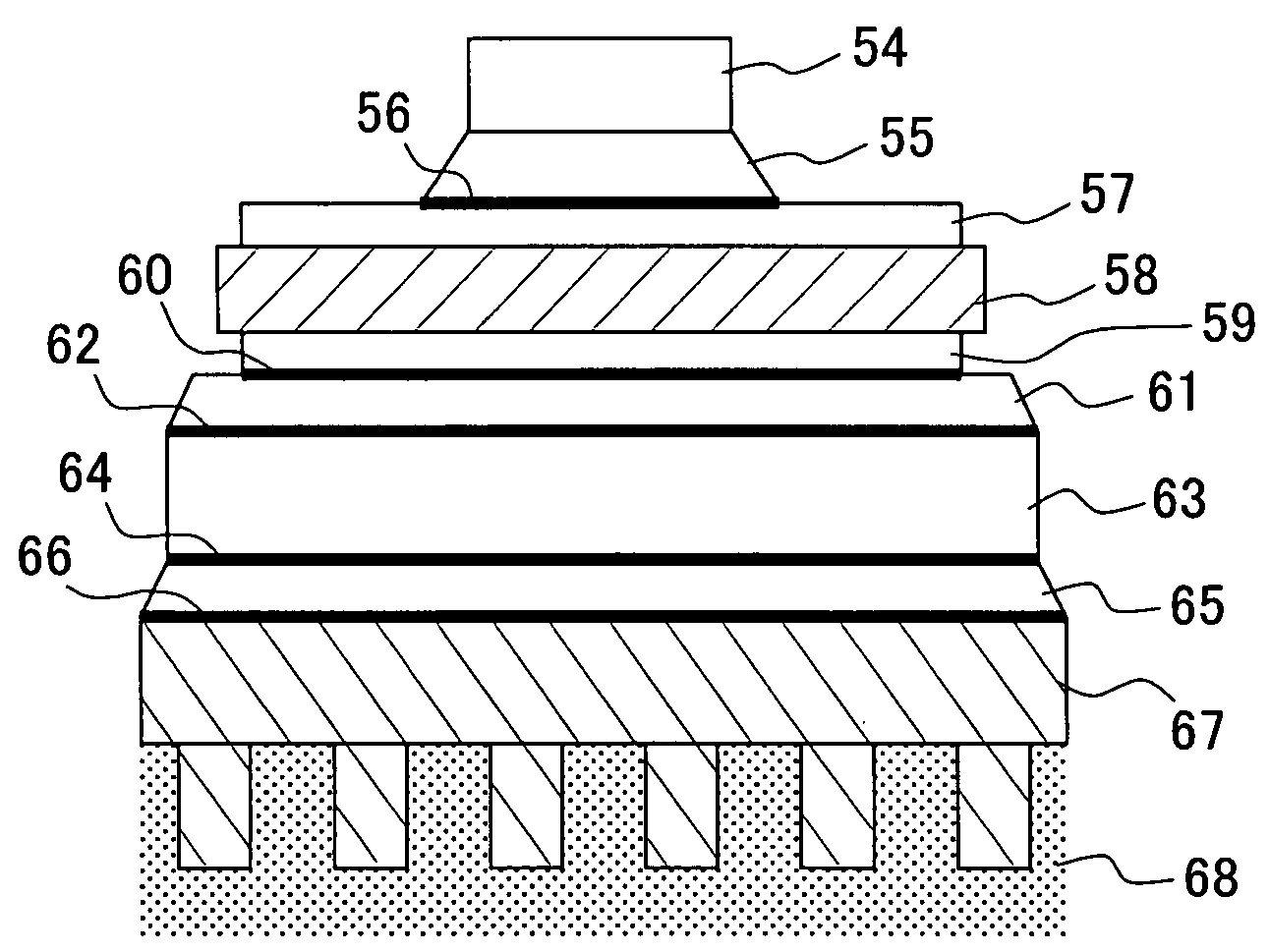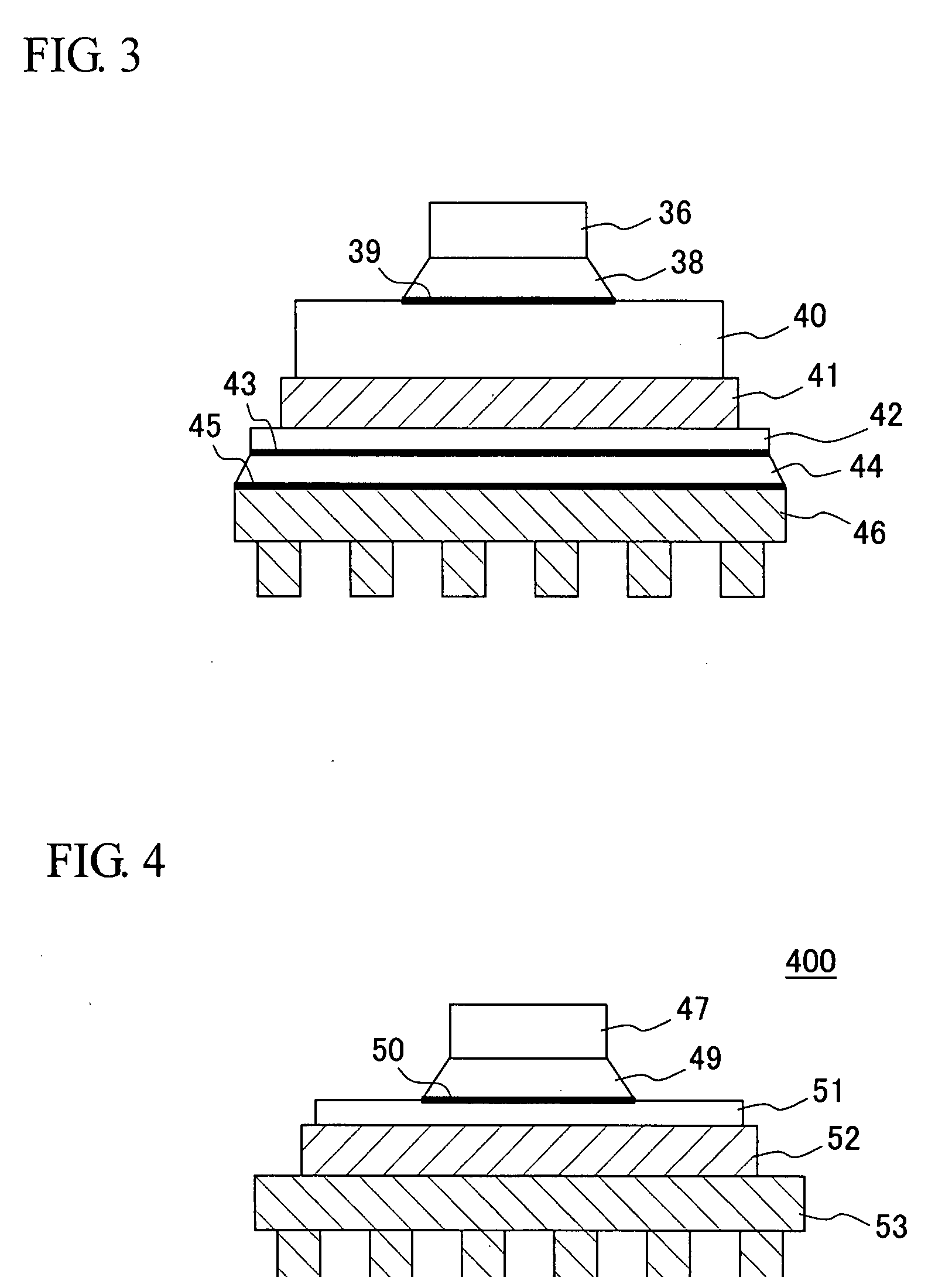Power module
a power module and power technology, applied in the field of power modules, can solve the problems of high cost, complex manufacturing process, and inability to dissipate heat well, and achieve the effects of inferior heat dissipation and reliability, complex mounting structure, and high cos
- Summary
- Abstract
- Description
- Claims
- Application Information
AI Technical Summary
Benefits of technology
Problems solved by technology
Method used
Image
Examples
embodiment 1
[0030]FIG. 1 shows a schematic cross section of a basic form of the power module according to the invention. A power module 100 is a 9-stage power module comprised of, from top to bottom: a power device 11 such as an IGBT chip; a metal wiring board 13 disposed on the lower surface of the power device 11 via a first solder layer 12; a metal heat dissipating plate 15 disposed on the lower surface of the metal wiring board 13 via a resin-based insulating layer 14 of thermoplastic polyimide or the like; an Ni plated layer 16 formed on the lower surface of the metal heat dissipating plate 15; a solder layer or a silicone grease layer 17; an Ni plated layer 18; and a heat sink 19, on which the Ni plated layer 18 is formed.
[0031]The heat generated by the IGBT chip is conducted by the individual layers before it is dissipated via the heat sink into water or to the air.
[0032]It is noted that instead of the conventional metal heat dissipating plate made of Cu—Mo or the like, which is relative...
embodiment 2
[0033]FIG. 2 shows a schematic cross section of a variation of the power module according to the invention. In this embodiment, the ceramic insulating material of the conventional structure is replaced by a resin-based insulating material. Specifically, a power module 200 is comprised of, from top to bottom: a power device 21 such as an IGBT chip; a first solder layer 22 disposed on the lower surface of the power device 21; an Ni plated layer 23; a metal wiring board 24; a metal plate 26 disposed on the lower surface of the metal wiring board via a resin-based insulating layer 25; an Ni plated layer 27; a second solder layer 28; an Ni plated layer 29; a metal heat dissipating plate 30; an Ni plated layer 31; a third solder layer or a silicone grease layer 32; and a heat sink 34 disposed via an Ni plated layer 33.
[0034]As in Embodiment 1, the heat generated by the IGBT chip is conducted by the individual layers before it is dissipated via the heat sink into water or to the air.
embodiment 3
[0035]FIG. 3 shows a schematic cross section of another variation of the power module according to the invention. In this embodiment, the wiring board and the heat dissipating plate of the foregoing basic structure are combined. Specifically, a power module 300 includes, from top to bottom: a power device 36 such as an IGBT chip; a metal wiring board / metal heat dissipating plate 40 disposed on the lower surface of the power device 36 via a first solder layer 38 and an Ni plated layer 39; a metal plate 42 disposed on the lower surface of the metal wiring board / metal heat dissipating plate 40 via a resin-based insulating layer 41; an Ni plated layer 43 disposed on the lower surface of the metal plate 42; a third solder layer or a silicone grease layer 44; and a heat sink 46 disposed via an Ni plated layer 45.
[0036]As in Embodiment 1, the heat generated by the IGBT chip is conducted by the individual layers and before it is dissipated via the heat sink into water or to the air.
PUM
 Login to View More
Login to View More Abstract
Description
Claims
Application Information
 Login to View More
Login to View More - R&D
- Intellectual Property
- Life Sciences
- Materials
- Tech Scout
- Unparalleled Data Quality
- Higher Quality Content
- 60% Fewer Hallucinations
Browse by: Latest US Patents, China's latest patents, Technical Efficacy Thesaurus, Application Domain, Technology Topic, Popular Technical Reports.
© 2025 PatSnap. All rights reserved.Legal|Privacy policy|Modern Slavery Act Transparency Statement|Sitemap|About US| Contact US: help@patsnap.com



